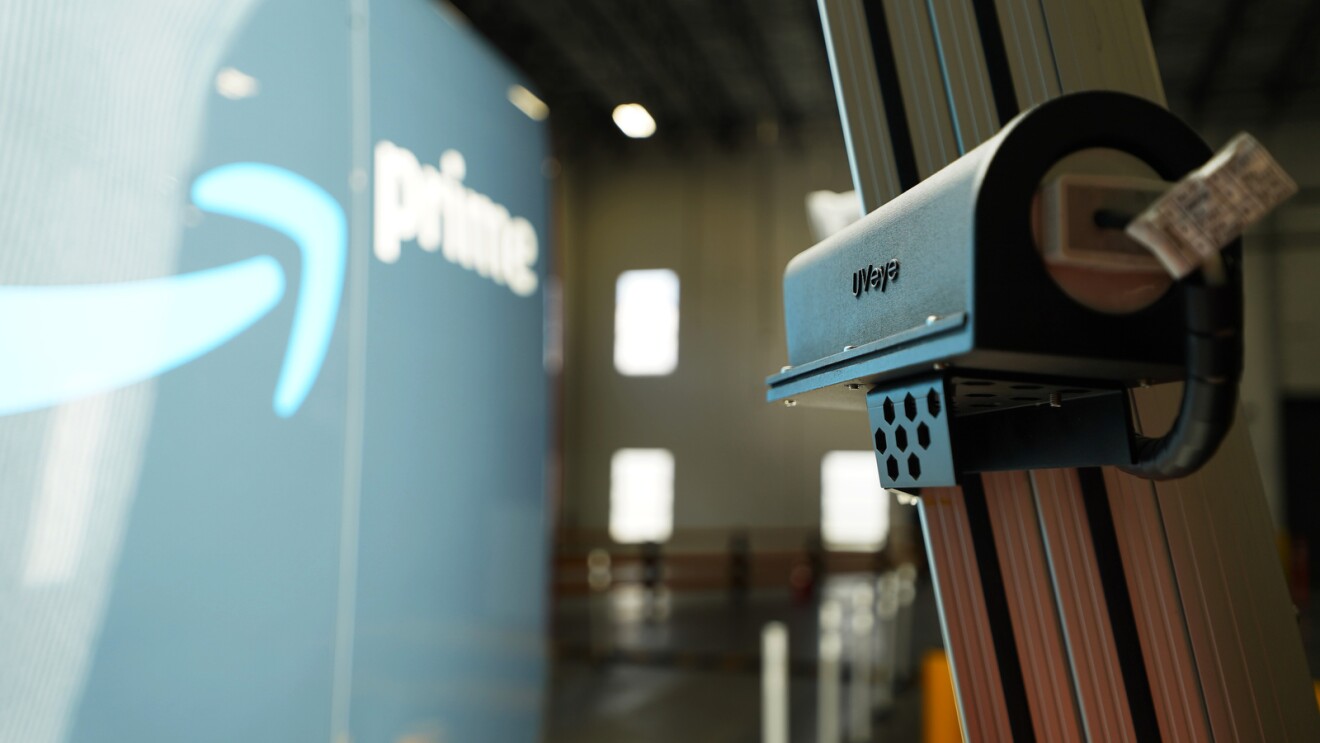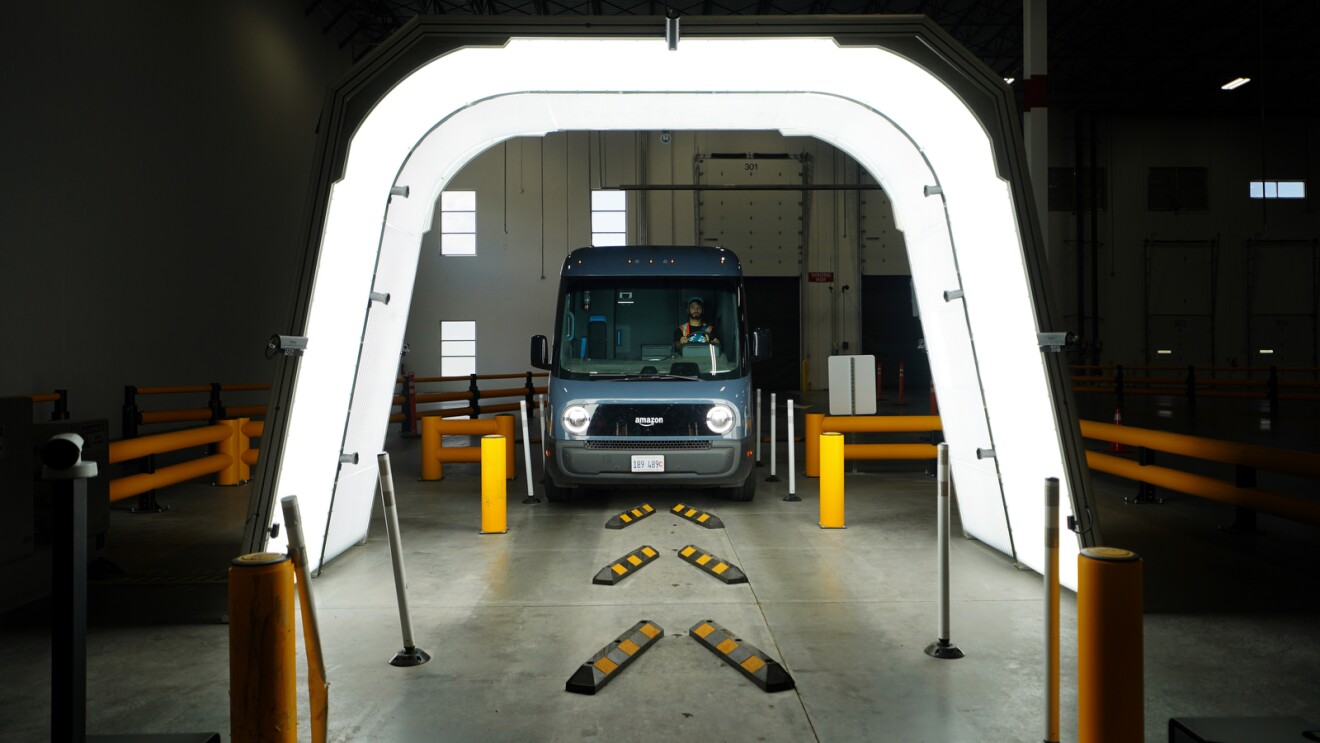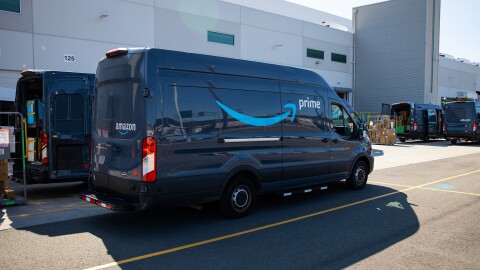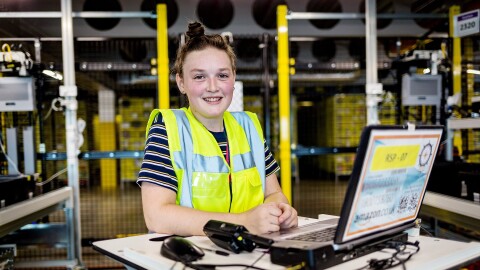Amazon has implemented a new artificial intelligence (AI)–based technology that can spot even the smallest anomalies in delivery vans—from tyre deformities and undercarriage wear to bent or warped body pieces—before they become on-road problems. The new Automated Vehicle Inspection (AVI) technology offers reassurance to fleet managers who previously had to rely solely on the human eye and manual inspections for daily safety rounds. Amazon is launching the AVI technology in partnership with tech start-up UVeye in the U.S., Canada, Germany, and the UK.
“The last thing I want is for something preventable to happen—like a tyre blowing out because we missed an imperceptible defect during our morning inspection,” said Bennett Hart, owner of logistics company Hart Road. “This technology improves the safety of our fleet.”

The improved safety of the nearly 280,000 drivers engaged by Delivery Service Partners (DSPs) like Hart Road worldwide who help deliver packages to Amazon customers is just one of the technology’s benefits. Another benefit is that AVI’s advantages can scale, which is helpful since drivers engaged by DSPs deliver 20 million packages to Amazon customers worldwide every day.
“One exciting benefit of AVI is the totality of insights the technology gives fleet managers,” said Tom Chempananical, global fleet director at Amazon Logistics. “It can keep track of detected vehicle issues and see if they are repeatedly happening on particular routes."

How AVI works
At the end of every route, drivers drive through an AVI archway and over a series of plates equipped with sensors and cameras.
"When you go to the doctor, you expect to see a scan; we kind of do the same thing but for vehicles,” said Amir Hever, UVeye’s CEO.

With the vehicle rolling at 5 mph, the AI system performs a full-vehicle scan in a few seconds, identifies problems, classifies them based on severity, and immediately sends the results to a computer. From there, a DSP can determine the fixes and services they need to perform to have well-maintained vehicles on the road the next day.
“It can catch everything,” Hart said. “And it’s essentially instantaneous.”

While the technology was originally invented to scan the underside of vehicles at borders and security checkpoints, it’s now using AI to seek more specific and minute details, such as vehicle damage. AVI relies on machine “stereovision,” meaning that it uses two vantage points to construct a full 3D image, and deep learning, a subset of machine learning in which a layered neural network mimics the learning processes of the human brain.
“We couldn’t simply pull this UVeye solution off the shelf and ask DSPs to start using it," Chempananical said. “Recognising the unique demands of the DSPs’ fleets of more than 100,000 delivery vans globally, we worked directly with UVeye to train the AI models and algorithms in Amazon’s rigorous standards for keeping the wheels turning safely.”
A game-changer for fleet maintenance
By making inspections faster, more accurate, systematic, and objective, AVI has already found hidden damage patterns. For example, 35% of all issues stem from tyres. These issues include sidewall tears and debris and nails lodged in treads, issues not easily picked up by manual inspections previously. With AVI, DSPs will receive notifications to replace tyres before they turn into a bigger problem. Preventing a tyre blowout or flat tyre on the road improves safety for drivers and other road users, and removes potential delays for customers.

“The beauty of AI is that each damage is then fed back to an application programming interface (API) that can train models and improve detection accuracy. So, the more AVI is used, the better it gets,” Chempananical said.
The analytics are run through Amazon Web Services (AWS), where the terabytes of vehicle images and data are processed and stored, using Amazon Simple Storage Service (Amazon S3), AWS Lambda, Amazon Elastic Compute Cloud (Amazon EC2), and other services. The output is processed in less than one minute and shared via the API. Amazon has integrated the output into the existing DSP experience and shows fleet managers the detected issues along with photos and repair suggestions.
Learning everything there is to know about the tyres on delivery fleets is just the start. Many other details are monitored with this digital microscope, including identifying potential trip-and-fall hazards on the cargo steps and spotting hazard light damage.

“This technology can become the new standard for vehicle inspection,” said Hever. "Amazon always thinks about scale, and the fact that we’re now working with one of the biggest networks of fleets in the world is helping us grow. The partnership constantly reminds us of what we have built and how to make it work in hundreds of delivery stations, dealerships, and other locations.”
What’s next?
In the future, the technology could be used to support all sorts of delivery vehicles, from bikes to drones, and it could inspect not only the exterior, but also the interior of the vehicles.
“The potential for AVI applications is huge,” Chempananical said. “It could also influence Amazon’s routing and geolocation technology for when repeated vehicle damage is reported happening in the same location.”
With AVI now a key part of his DSP toolkit, Hart feels confident about getting his vehicles on the road and spending less time on inspection tasks, which can now be automated. The technology has provided a pathway to grow his business, cutting down on fleet wear and tear over the long run, and it has provided peace of mind for the hands-on entrepreneur.
“There’s so much that goes into running a delivery business and properly caring for the vehicles, and manual inspections aren’t 100% accurate or objective,” said Hart. “With AVI, I know I can spend more time with the drivers we engage.”













